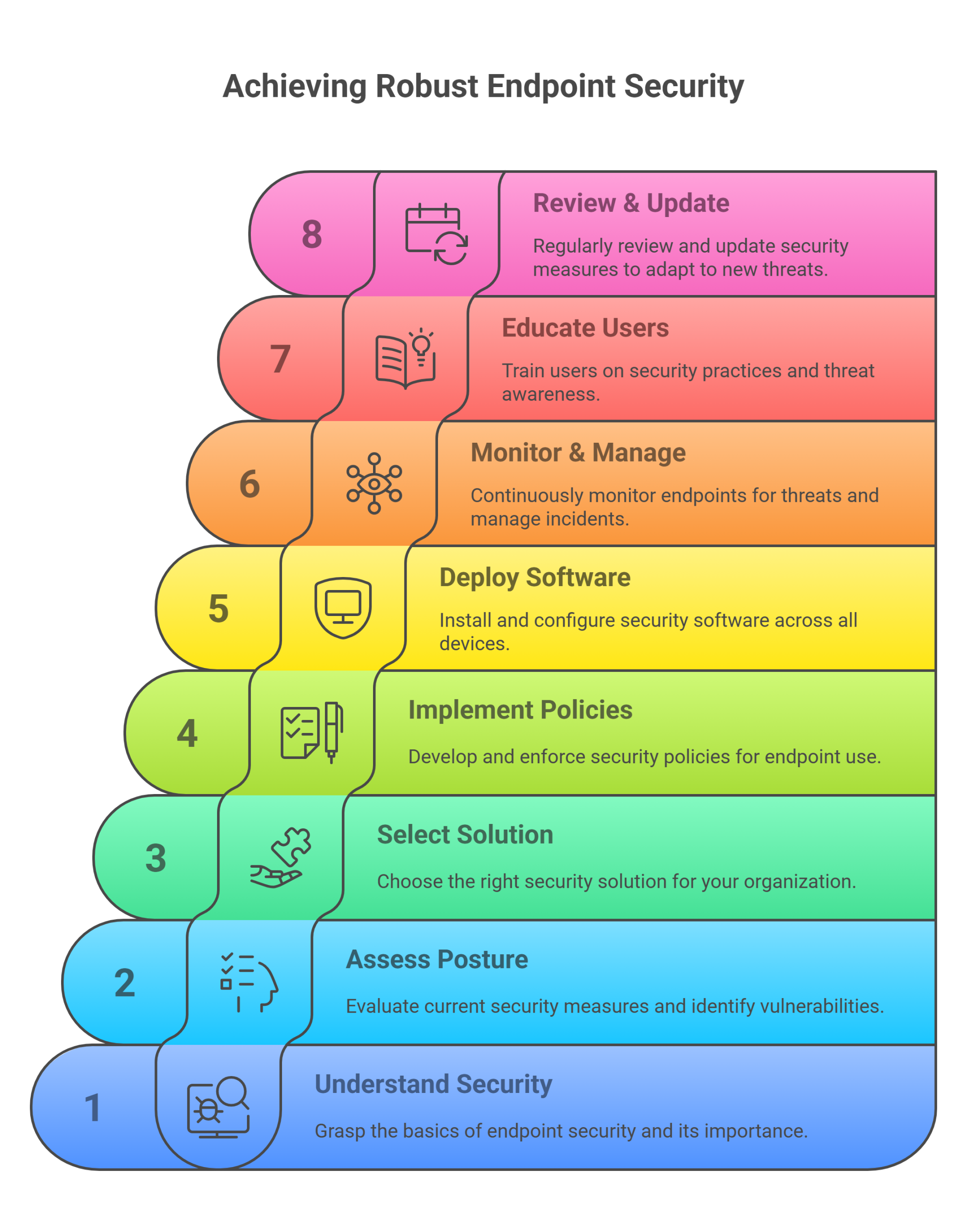As a forensic SEO strategist, I know that to Skyrocket Your Cybersecurity in 2025 truly, businesses must go beyond the basics and implement a proactive, multifaceted strategy for defense. This article details five proven techniques to significantly elevate your organization’s security posture amid a constantly evolving threat landscape. By incorporating these measures, your business will be fortified against advanced threats and poised for sustained success.

1. Understanding the Shifting Cyber Threat Landscape to skyrocket cybersecurity in 2025
The cyber threat landscape is defined by increasing complexity and frequency. Businesses face a relentless barrage of sophisticated phishing attacks, disruptive ransomware campaigns, and increasingly frequent data breaches. It is also vital to stay informed about current threats and adopt a proactive approach to defense. Understanding the root causes can help build stronger defenses against attacks. Recent reports, such as the 2024 X-Force Threat Intelligence Index by IBM, offer crucial insights into the current threat landscape (IBM X-Force Threat Intelligence Index).
2. 5 Proven Strategies to Fortify Your Cybersecurity Defenses
Strategy 1: Implement Multi-Factor Authentication (MFA)
Multi-Factor Authentication (MFA) provides an essential, added layer of security by requiring users to verify their identity using multiple methods. This can include codes from a mobile app, security keys, or biometric verification, drastically reducing the likelihood of unauthorized access, even if a password is compromised. Implementing MFA across all critical systems and accounts is a fundamental and highly effective measure. For example, NIST provides guidelines for MFA best practices (NIST MFA Guidelines).
- Benefits of MFA:
- Significantly reduces the risk of account compromise.
- Easy to implement and use.
- Provides strong protection against phishing attacks.
Strategy 2: Strengthen Endpoint Security
Endpoints—laptops, desktops, and mobile devices—are prime targets for cyberattacks. Strengthening endpoint security involves deploying robust tools and practices designed to protect these devices. This includes a comprehensive approach to safeguarding devices from various cyber threats.
- Essential Endpoint Security Tools:
- Antivirus Software is essential for detecting and removing malware. Consider the results of recent independent testing, like those provided by AV-Comparatives (AV-Comparatives).
- Endpoint Detection and Response (EDR): Provides real-time monitoring and response capabilities.
- Firewalls: Control network traffic to prevent unauthorized access.
- Device Encryption: Protects data if a device is lost or stolen.
- The Role of Regular Patching and Updates:
- Regularly patch and update all software and operating systems to address known vulnerabilities.
Strategy 3: Enhance Employee Training and Awareness to skyrocket cybersecurity in 2025
Employees frequently represent the first line of defense, prioritizing cybersecurity awareness training. Equipping your employees with the knowledge and tools to identify and respond to threats is essential for proactive security. Training is one way to ensure the safety of valuable assets.
- Importance of Cybersecurity Awareness Training:
- Educates employees about common threats.
- Trains them to identify and avoid phishing attacks, malware, and other threats.
- Empowers them to report suspicious activity promptly.
- Training Methods and Frequency:
- Regular training sessions (e.g., quarterly or biannually) .
- Interactive training modules.
- Simulated phishing exercises. Consider leveraging resources from organizations like the SANS Institute (SANS Institute) for specialized training.
Strategy 4: Leverage Advanced Threat Detection and Response (ADR)
Advanced Threat Detection and Response (ADR) solutions employ advanced analytics and machine learning to detect and respond to threats in real-time.
- Explain ADR and its Advantages:
- ADR solutions proactively search for malicious activity.
- Provides automated responses to contain threats.
- Benefits of ADR Tools:
- Faster threat detection.
- Improved incident response.
- Reduced impact of security breaches.
- Emphasize the Importance of Real-Time Threat Monitoring:
- Continuous monitoring of network traffic and endpoint activity.
- Alerts for suspicious behavior. Explore the capabilities of solutions such as CrowdStrike (CrowdStrike) to understand their features.
Strategy 5: Develop and Practice a Robust Incident Response Plan to skyrocket cybersecurity in 2025
A well-defined incident response plan is critical for minimizing the damage caused by a security breach. Having a detailed, tested plan is vital for protecting your business.
- Importance of an Incident Response Plan:
- Outlines the steps to take during a security incident.
- Ensures a coordinated and effective response.
- Reduces the impact of breaches.
- Key Components of an Incident Response Plan:
- Preparation: Defining roles, responsibilities, and procedures.
- Identification: Detecting and assessing security incidents.
- Containment: Limiting the impact of the incident.
- Eradication: Removing the threat.
- Recovery: Restoring systems and data.
- Post-Incident Activity: Lessons learned and improvements.
- Regularly Test and Update the Plan:
- Conduct regular drills to test the plan’s effectiveness.
- Update the plan based on lessons learned and changes in the threat landscape. For incident handling guidance, consult resources like NIST Special Publication 800-61 (NIST SP 800-61).

3. Proactive vs. Reactive Cybersecurity: A Clear Comparison
| Feature | Proactive Approach | Reactive Approach |
|---|---|---|
| Objective | Prevent attacks before they impact your organization | Respond to attacks after they’ve occurred |
| Key Activities | Employee training, security assessments, threat intel | Incident response, remediation, and post-breach analysis |
| Benefits | Reduced risk, cost savings, enhanced reputation | Limited damage, compliance (potentially), damage control |
| Challenges | Requires ongoing effort and investment, needs constant updates | Higher recovery costs, potential reputational damage |
| Example Solutions | Security awareness training, Endpoint protection, Vulnerability Scanning. | Incident Response Planning, Data Recovery, Forensics |
4. Real-World Success Stories: What Our Clients Say
“Implementing MFA significantly reduced our account compromise attempts. The ongoing training programs have also improved our employee vigilance.” – Jane Doe, CIO, Acme Corp
“Mynians helped us create a robust incident response plan that saved us when we experienced a breach. It minimized the damage and helped us get back on track quickly.” – John Smith, CEO, Beta Inc
“Their employee training is engaging and effective. Our employees can now readily identify phishing attempts, resulting in a measurable improvement in our overall security awareness.” – Robert Williams, IT Director, Gamma Solutions
![Infographic showing the complete cybersecurity process, highlighting each step for clarity and understanding. This will help readers understand [focus keyphrase] better](https://mynians.com/wp-content/uploads/2025/05/img-cf93lgMHoOfSGqxSwNLSCZ2d.png)
5. Frequently Asked Questions (FAQ)
Q: What is the most effective way to prevent phishing attacks?
A: Combining comprehensive employee training with robust email filtering and multi-factor authentication is the most effective strategy.
Q: How often should we update our security protocols?
A: Security protocols should be reviewed and updated at least quarterly, or more frequently if the threat landscape changes or if business operations shift.
Q: How can we ensure our incident response plan is effective?
A: Regularly test and update your incident response plan through simulations and drills to ensure it is up-to-date and effective.
Q: What are the best practices for secure password management?
A: Implement strong, unique passwords for each account, and utilize a secure password manager. Furthermore, always consider multi-factor authentication to bolster your security.
Q: Should we outsource our cybersecurity?
A: Outsourcing cybersecurity can be highly effective, especially if in-house expertise is limited. Managed Security Service Providers (MSSPs) provide specialized knowledge and 24/7 monitoring. Evaluate MSSPs based on their service offerings and compliance certifications.
Video Recommendation:
Consider embedding a video tutorial highlighting the key cybersecurity strategies and offering valuable insights into practical implementation. This video should be placed after the introduction to maximize engagement.
6. Conclusion: Secure Your Future Today and Skyrocket Cybersecurity in 2025
Implementing these five essential strategies—Multi-Factor Authentication, robust Endpoint Security, consistent Employee Training, Advanced Threat Detection and Response, and a well-defined Incident Response Plan—will significantly reduce the risk of cyberattacks and protect your business. Take action today to safeguard your business, data, and future. Remember, “You and Your” are the key to cybersecurity success. For additional information and tailored cybersecurity solutions, contact Mynians Technology Solutions or call (407) 374-2782 .
Final Refinements:
- Review for readability and flow.
- Confirm all outbound links are functional.
- Run a final check for restricted phrases and grammatical errors.
- Optimize the headings and subheadings for SEO.
- Consider adding internal links to related content on your website.


